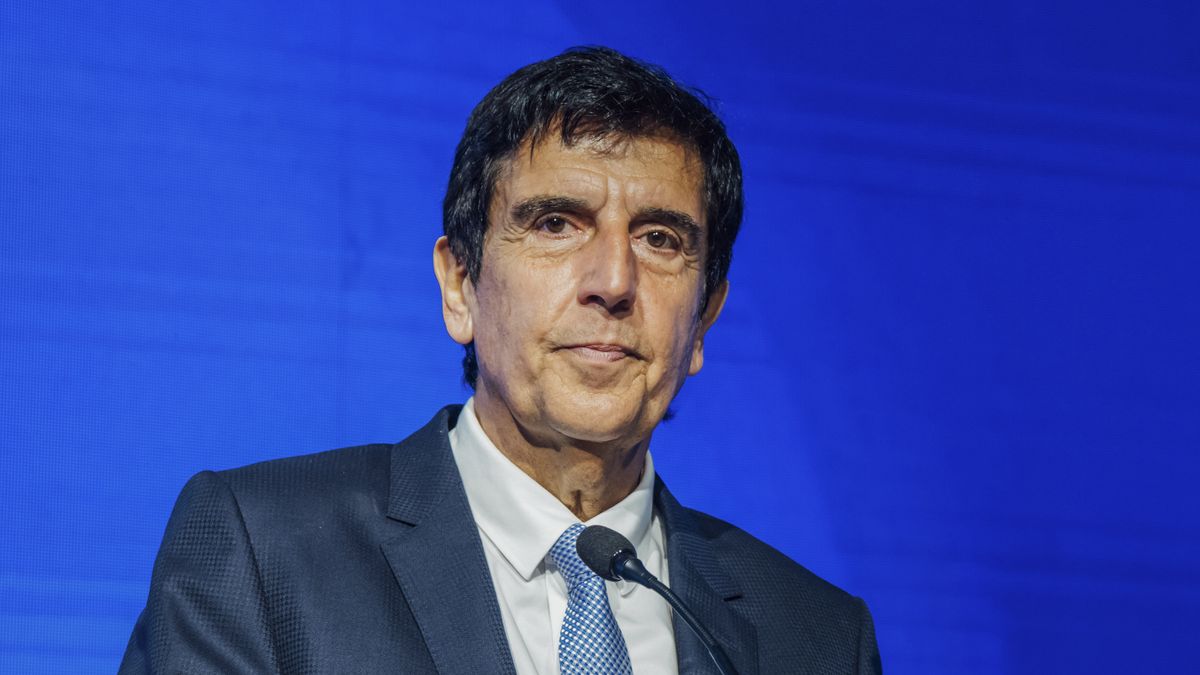Carlos Melconian: The Argentine economy has been in recession since the middle of this year. The original trigger was the drought that collapsed the harvest. Agriculture and everything that is in contact with this sector was greatly affected. The rest of the activities (industry, commerce, construction, etc.) gradually began to feel the consequences as well. The exchange disorder and the inflationary flash of these months add fuel to the fire. The government’s measures put the situation behind us. They are not going to change the history of activity and consumption. The million dollar question is whether this will be a short or long recession. It makes a big difference. Short for Argentine parameters is around a year: that is, we are not going to be saved from a contraction in activity that lasts until the end of summer.No. How this story continues later will depend on whether the weather helps and the 2024 harvest normalizes and fundamentally on how the next government and its economic program fare. If it does well, it will be a short recession. And vice versa.
Q.: The latest data on wholesale prices show an acceleration, with an increase of 18.7%. Some analysts maintain that the lack of foreign exchange reserves (estimated to be negative at around $4.5 billion) and the drop in demand for money, among other elements, pose the risk of hyperinflation. Do you think there is a danger of hyperinflation?
CM: Hyperinflation in Argentina means that price increases double month after month. The example is the series from February to July 1989: 9% monthly, 17, 33, 78, 114, 196. Something similar happened between December 1989 and March 1990: December 40% monthly inflation, January 79%, February 61%, March 95% (with the BONEX Plan in the middle). They are extreme spiralizations that occur in a very fragile political context, an extremely disorderly macro and when the official dollar “goes crazy” and sucks up prices.
I don’t necessarily see a hyper nearby. I do warn about the risks of hasty and disorderly exchange liberalizations in a macro and political context as unstable as the current one. The impacts of the surges or violent jumps in the official dollar (which is the one that has the greatest impact on most prices) cannot be underestimated. They are very destabilizing. Eye. I also warn about the consequences of trying to continue with more of the same. Because you are going to crash into reality. December 10 has to be the starting point that aborts the expectation of virulent and unmanageable spirals. Between the colorful mirror irresponsibility of the current ruling party and the fantasy of others, there is a way out that gives peace of mind. Let people know that there is a realistic, consistent solution that generates a horizon without the need for tragedies in the middle.
Q: Some economists estimate that inflation next year could be 200%. What is your projection? And activity?
CM: The inflation and activity numbers for 2024 will be totally linked to whether the government that takes office on December 10 enters with the right or left foot (in addition to whether the weather helps, it rains and agriculture recovers). With an administration that starts well politically, with control of the situation, that becomes strong in Congress, weathers the storm of the inevitable rearrangement and initial honesty of relative macro and micro prices and manages to implement a stabilization program (adequate to the circumstances), the 2024 inflation rate may be lower than that of 2023 and even end next year at very low monthly values. The activity is linked to the above: it can improve if the incoming government gets the program right and people believe in it. Otherwise, if the connection with the new administration becomes complicated, possibly next year will be worse than this one.
Q: The official intention is to keep the dollar at 350 pesos until mid-November. Do you think it is possible that the government can maintain it?
CM: The devaluation jump on August 14 at 10 in the morning was inevitable and at the same time useless. Inevitable because reality imposed it (not the IMF). Useless because in just two months inflation ate it up. It was the most fleeting devaluation in history. Exporters do not sell more, importers do not buy less and the BCRA does not accumulate reserves. He bought dollars in the official market in August and September because he did not pay for imports and resorted to a higher special dollar for soybeans. Since October, he has been selling again. For this reason and because the gap is higher than before the devaluation, everyone asks when the next devaluation is coming (“a la Sigaut 1981”). And what would be the exchange rate correction with the change of government on December 10. The 350th passed “with pain and without glory.” It’s already past. Reality will require honesty, updating it because it is once again behind inflation. It is an inevitable correction. It can happen partly in the transition and partly with the new government. It will depend on the result of the election on 22 and what type of transition we have.
Q: What situation will the economy be in in December and what will be the most urgent measures that will have to be taken at that time?
CM: There is a known and immutable structural legacy: economic stagnation; high inflation regime; export weakness; investment weakness; unfinanceable public spending; unbearable tax pressure; unpayable cost of capital; BCRA “broken”; degraded labor market; entrenched high poverty.
And there will be a mobile and not so well-known inheritance “of the last day”: with what official real exchange rate it is assumed; what a gap; which importing debt and which of profits and dividends; what level of negative reserves; what fiscal deficit and what floating debt in pesos; how liquefied primary spending; how much 2024 collection anticipated in 2023; how much COUNTRY tax to replace; how much Treasury and BCRA debt in the banks’ assets; how much inflationary repression. There are no urgent or non-urgent measures here.
What is required is the announcement of the start of a plan x 3: a macroeconomic stabilization program, reforming the public sector and reorganizing the private sector. All three things simultaneously, equally relevant and urgent. Of course, the heart is macro stability: without stability, the reforms and reorganization will be truncated or fall on deaf ears.
Q.: The remunerated debt of the Central Bank already exceeds $20 billion (between Leliq and repos) and the endogenous emission that generates the payment of interest leads to the monetary base doubling every three months. How do you take this ball apart?
CM: The fundamental thing is to urgently go to zero primary fiscal deficit. To cut off the flow of BCRA debt (which is a consequence of the Treasury’s need for pesos). Without cutting off the flow, there is no way out. After, within the framework of a stabilization program, disarmament is possible without traumatic exits. Gradually, dismantling little by little, paying “low” interest rates for the LELIQ (negative in real terms), making the switch with credit to the private sector. There are no magic solutions nor are earthquakes viable.
Q.: According to private estimates, the commercial debt of importers would already exceed 40 billion dollars. How is the trap dismantled?
CM: It is one of the greatest irresponsibility of this government. Import and not pay. So that the cost of the import adjustment resulting from the export collapse of the drought will be paid next in 2024. A debt of US$20 billion was accumulated between 2022 and the first nine months of 2023. And it continues to rise. An atrocity. A stock of debt headed by the private sector that will have to be managed. One of the worst inheritances. To which we must add what is imported and paid in yuan, which is debt to China headed by the BCRA. Which also continues to rise (to US$ 11.5 billion). Shameful. Debts are honored. But it will be impossible to treat stock and flows in the same way. And we will have to negotiate with China.
Q.: A study by the Congressional Budget Office, which analyzed the expenditures of the National Administration between 2010 and 2021, shows that two thirds of the expenditure is rigid (composed of retirements, public salaries, debt interest and family allowances, among others). Given this situation, where is it possible to cut public spending, in what way, in what terms?
CM: At this point of the macroeconomic disorder that we are experiencing, the stagnation that we have experienced for more than a decade and the very high inflation that we suffer, almost no one doubts the impossibility of continuing with a fiscal deficit in Argentina. It is not viable to continue liquefying pensions, salaries and social plans as a temporary and totally unfair mechanism to settle accounts.
We cannot continue with the fantasy of “those who govern, shielded by the issuance of pesos.” It is an unavoidable condition to achieve primary fiscal balance “immediately.” There are more than 5 trillion pesos or 3 points of GDP that this government will end with the primary deficit. There is no chance that a macroeconomic stabilization plan will succeed without having reached zero primary deficit and that zero will be lasting. We must normalize the value of public rates. Energy and transportation. Anyone who says otherwise is either doing the numbers wrong or lying. It is not going to zero subsidies, it is going to a financeable number. Plus some reduction in the deficit of public companies, redirecting specific allocation taxes for the Treasury, cuts in Ministries, recalibrating public works, social plans and transfers to provinces. It is a balanced, realistic, possible combo. And it has to be fast. It is not with a chainsaw, it is with laparoscopic surgery. The motorcycle saw is a campaign slogan, not a real fiscal policy.
Q: The other side of the coin is the high tax pressure in Argentina, one of the highest in the world, according to the World Bank. Is it possible to reduce taxes and at the same time aim for fiscal balance? How?
CM: It is possible to reduce taxes. And it will be done as soon as possible. But it does not mean rushing into a tax reform that reduces tax pressure from day one. Or do it to the barracks load and for electoral purposes as happened recently with the elimination of the fourth category of Profits (and the “IFE disguised as a VAT refund). First, we must ensure zero primary deficit and only then move forward with reforms. Announce it upfront, but execute it when possible. Otherwise, the same thing as always will happen: tax reforms that are truncated or that are reversed and end up worse because the fiscal deficit eats it up and we fall back into the inflation tax (it already happened with the 2017 reform).
Q: You anticipate that a profound labor reform is necessary. If so, what would be the most important axes?
CM: What we have today is not enough. This is proven by the barely 6 million registered workers, many of whom are impoverished. There is more informality than formality. The current work scheme is of no use to anyone; not even the unionists. The three axes of a labor reform involve: i) reducing litigation (labor contingency is “infinite” and conditions both the hiring of workers and the value of the companies); ii) have legislation for new work modalities (there are 1 million “self-employed” without registration and 3 million “independent” in a regime like the monotax that has limits, is inequitable and does not contemplate retirement or health) and iii) give solution to 1.5 million people who have a subsidy (a social work plan) that camouflages true unemployment and generates bad incentives for reintegration.
Source: Ambito




